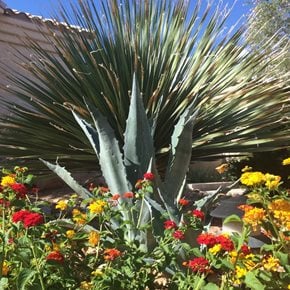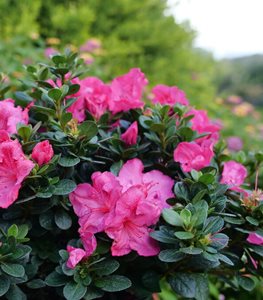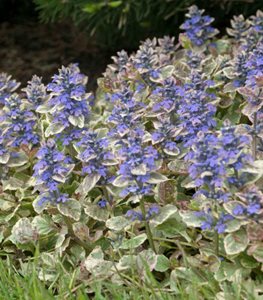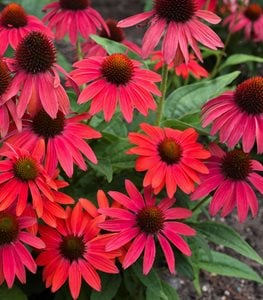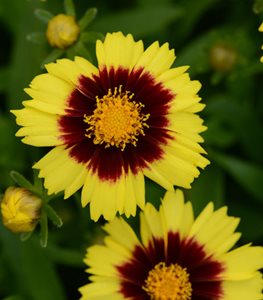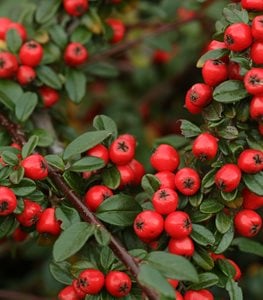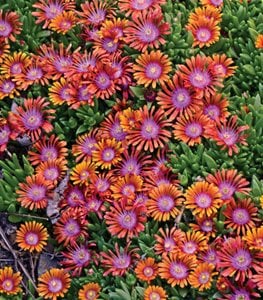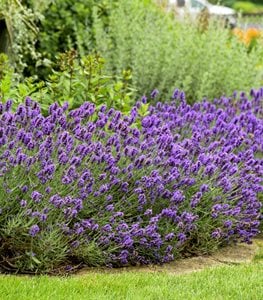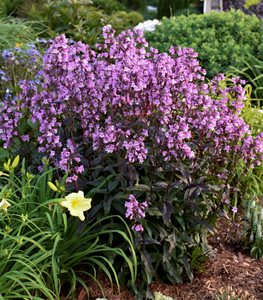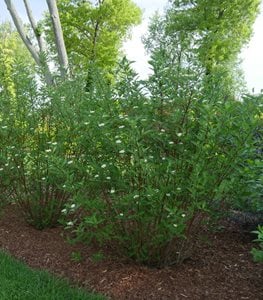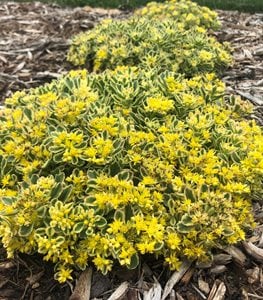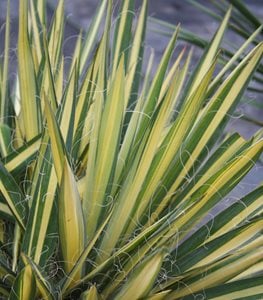15 Fire-Resistant Plants & Landscaping Tips
No matter where you live, your home and garden may be at risk from wildfires. Learn about 15 plants that help keep wildfires at bay and get landscape design tips for reducing fire risk.Climate change, including hotter temperatures and shifting precipitation patterns, is creating the perfect conditions for increased wildfire risk across much of the United States, even in areas that were once considered reasonably safe. The frequency, extent, and severity of wildfires is also likely to intensify in the years to come, as prolonged droughts and escalating temperatures continue to parch the landscape.
If you live in a high-fire-risk zone (or an area where climate change has put you at greater risk) choosing plants for your garden that offer good fire resistance can help reduce the threat to your home and property. This strategy, called fire-resistant or fire-smart gardening, is designed to limit wildfire activity by creating a defensible space around your home where vegetation and other factors are managed to keep fire at a safe distance.
On this page: What Makes a Plant Fire-Resistant? | 15 Fire-Resistant Plants | Landscaping Tips
On this page:
WHAT MAKES A PLANT FIRE RESISTANT?
Although no plant is completely fireproof (all vegetation can ignite under the right conditions), some plants have qualities that make them less vulnerable to fire than others, including:
- High moisture content in the leaves. Make sure your plants are not water stressed by keeping them adequately watered, which makes them more resistant to igniting.
- Limited accumulation of dead vegetation within or beneath the plant. Keep your landscape well maintained by removing dead branches and leaf litter beneath the plants. Replace older plants that are more woody than leafy.
- Open branching habits (which provides less fuel for fires). Selectively thin your trees and shrubs to open them up; remove densely crowded branches.
- Low levels of volatile oils or resins on the plant’s leaves, stems, and branches.
- Extensive root systems (making the plant more likely to recover after fire damage).
For the best fire resistance, opt for deciduous trees over fine-needled evergreens that have a high resin content, such as pines and junipers. You also can’t go wrong with succulents that have thick, fleshy leaves, like ice plants and sedums. Plants native to your area can also be good choices for a fire-resistant garden because they require less water to stay hydrated and have developed their own strategies to protect themselves from wildfire.
To reduce the accumulation of easily ignitable vegetation, avoid plants like tall ornamental grasses and other large perennials that die back in winter and leave combustible dried leaves and stems above the ground. (If you do plant them, always cut them back to just above the ground in the fall.) Also avoid deciduous trees and shrubs with peeling, papery bark, like river birch.
15 FIRE-RESISTANT PLANTS
AGAVE (Agave spp.)
Zones: 5-11
Plant type: Herbaceous perennial
Exposure: Full sun
Height/Spread: 1 to 10 feet tall, up to 12 feet wide, depending on the variety
Thanks to their thick, broad, water-filled leaves, these showy succulents thrive in hot, dry conditions, making them ideal for desert climates and areas with mild winters. Larger varieties are excellent for use as firebreaks in the landscape. Learn more about growing agave plants.
AZALEA (Rhododendron spp.)
Zones: 6-9, with some deciduous varieties hardy down to Zone 3
Plant type: Evergreen or deciduous shrub
Exposure: Full to partial sun
Height/Spread: 1 to 20 feet tall, 2 to 20 feet wide, depending on variety
Grown primarily for their attractive spring blooms, azaleas are also useful as hedging or screening plants and in woodland borders. Prune after blooming to shape plants and remove any dead or diseased branches. Learn more about growing azalea shrubs.
Pictured: Perfecto Mundo Epic Pink® reblooming azalea from Proven Winners.
BUGLEWEED (Ajuga reptans)
Zones: 3-10
Plant type: Herbaceous perennial
Exposure: Part shade to full sun
Height/Spread: 6 to 8 inches tall, spreads to 2 feet or more
This resilient ground cover spreads quickly to form a dense mat that will help smother weeds and discourage embers from igniting. Avoid growing in a spot where its aggressive nature could infringe on other plantings. Learn more about growing bugleweed.
CONEFLOWER (Echinacea spp.)
Zones: 3-9
Plant type: Herbaceous perennial
Exposure: Full sun
Height/Spread: 2 to 5 feet tall
These easy-care, drought-tolerant bloomers are prized for their colorful daisy-like flowers in summer. Although plants require little maintenance, you should cut them back to the ground in the fall to minimize fire risk. Learn more about growing coneflower.
Pictured: Summersong™ Firefinch™ coneflower from Proven Winners.
COREOPSIS (Coreopsis spp.)
Zones: 4-9
Plant type: Herbaceous perennial
Exposure: Full sun
Height/Spread: 6 inches to 8 feet tall, depending on the variety
This fuss-free native prairie plant thrives through sweltering heat and blazing sunlight and will tolerate just about any soil type as long as it’s well drained. Produces a profusion of bright yellow, gold, or red flowers that bloom non-stop from early summer to fall. Learn more about growing coreopsis.
Pictured: Uptick™ Yellow & Red tickseed from Proven Winners.
COTONEASTER (Cotoneaster dammeri)
Zones: 5-8
Plant type: Broadleaf evergreen shrub
Exposure: Full sun
Height/Spread: Up to 1 foot tall with a spread of 4 to 6 feet
A low-growing, spreading shrub with dark, shiny green leaves that change to burgundy in fall. Produces masses of creamy white flowers in spring followed by red cranberry-like berries that persist into winter.
CREEPING PHLOX (Phlox sublata)
Zones: 3-9
Plant type: Herbaceous perennial
Exposure: Full sun
Height/Spread: 4 to 6 inches tall, spreads 18 to 24 inches
Unlike taller garden phlox, this ground-hugging variety (also called moss phlox) is smothered in spring by cheery flowers in shades of lavender, pink, rose, or purple. Once the blooms fade, they leave behind an attractive mat of needle-like, linear leaves.
Pictured: ‘Purple Sprite’ spring phlox from Proven Winners.
HARDY ICE PLANT (Delosperma spp.)
Zones: 6-10
Plant type: Herbaceous perennial
Exposure: Full sun
Height/Spread: 3 to 6 inches tall, spreads up to 2 feet
Despite the name, ice plants are actually fire-resilient succulents that thrive in warm, sunny, dry locations. Produces brightly colored, daisy-like flowers from early summer until fall. In milder climates, the glossy, cylindrical leaves form an attractive evergreen carpet. Learn more about growing hardy ice plant.
Pictured: Fire Spinner® ice plant from Proven Winners.
LAVENDER (Lavandula spp.)
Zones: Varies depending on the species
Plant type: Woody perennial
Exposure: Full sun
Height/Spread: 2 to 3 feet
A perennial herb admired for its attractive purple blooms, sweet fragrance, and compact shrub-like form. Although it contains scented oils, lavender is slow to ignite as long as you keep it watered during dry spells. Learn more about growing lavender.
Pictured: Sweet Romance® lavender from Proven Winners.
PENSTEMON (Penstemon spp.)
Zones: Varies depending on the species
Plant type: Herbaceous perennial
Exposure: Full sun
Height/Spread: Varies widely, from under 10 inches tall up to 6 feet.
It’s hard to beat penstemon (also called beardtongue) if you’re looking for a resilient native wildflower that offers good fire-resistance, ease of care, and wildlife value. A relative of foxgloves and snapdragons, producing similar spikes of tubular flowers in a broad range of colors. Learn more about growing penstemon.
Pictured: ‘Midnight Masquerade’ penstemon from Proven Winners.
RED TWIG DOGWOOD (Cornus sericea)
Zones: 3-7
Plant type: Deciduous shrub
Exposure: Full sun to part shade
Height/Spread: 6 to 9 feet tall, 7 to 10 feet wide
A small ornamental shrub grown primarily for its bright red stems, which add interest to the winter garden. Grows well in a wide range of soils, including swampy or boggy locations. Learn more about growing red twig dogwoods.
Pictured: Arctic Fire® Red dogwood from Proven Winners.
SEDUM (Sedum spp.)
Zones: 3-10
Plant type: Herbaceous perennial
Exposure: Full sun to part shade
Height/Spread: 2 to 12 inches tall, spreads up to 2 feet, depending on variety
Also called stonecrop, these drought-tolerant succulents are very low maintenance and require little pruning. To keep plants healthy and fire resilient, remove any dead or damaged branches and foliage in the fall. Learn more about growing sedum.
Pictured: Rock 'N Low™ 'Boogie Woogie' ground cover sedum from Proven Winners.
SPURGE (Euphorbia spp.)
Zones: 4-10
Plant type: Herbaceous perennial
Exposure: Full sun to part shade
Height/Spread: Varies depending on the species
Euphorbias are valued for their richly colored leaves, unusual flowers, and wide range of forms, ranging from creeping ground covers to shrubs and small trees. Their drought and heat tolerance make them particularly well-suited for dry, fire-prone climates. Learn more about growing euphorbias.
Pictured: 'Bonfire' cushion spurge from Proven Winners.
YARROW (Achillea spp.)
Zones: 3-9
Plant type: Herbaceous perennial
Exposure: Full sun
Height/Spread: 8 inches tall to 5 feet tall, depending on variety
This long-blooming perennial thrives on neglect and can handle drought, infertile soils, and sweltering heat with ease. The broad, flat-topped flower clusters come in a wide array of vibrant colors. Learn more about growing yarrow plants.
Pictured: 'Firefly Sunshine' yarrow from Proven Winners.
YUCCA (Yucca spp.)
Zones: 4-11
Plant type: Broadleaf evergreen perennial or shrub
Exposure: Full sun
Height/Spread: Varies by type, ranging from 2 to 30 feet tall and up to 25 feet wide
Easily recognized by their stiff, sword-shaped leaves and tall spikes of white flowers in summer, these rugged native plants are extremely drought tolerant and thrive in dry, desert-like climates. Many species are also cold hardy and can withstand freezing temperatures. Learn more about growing yuccas.
Pictured: Color Guard yucca from Proven Winners.
FIRE-RESISTANT LANDSCAPING TIPS
- Create a defensible space (or ember-resistant zone) within 30 feet of your home by removing any dead or dry vegetation and by pruning back overgrown trees. (Learn more about the basics of defensible space from ReadyforWildfire.org.)
- Consider installing a drip irrigation system to keep plants well hydrated. Plants that are green and lush are more difficult to ignite than dry, parched vegetation.
- To decrease the potential that fire will climb, or “ladder,” from the ground to the top of a tree or shrub, remove lower branches, prune to create a more open structure, and clean up dead leaves and branches at the base.
- Limit the planting of trees and shrubs to small clusters of a few each to break up the continuity of vegetation across the landscape. Also leave adequate space between plants rather than packing them tightly together.
- Add vegetation-free “fuel breaks” that can act as barriers to a rapidly spreading fire. Stone garden pathways, faux riverbeds, retaining walls, and water features are all effective ways to break up dense clumps of vegetation.
- Although mulch is great for water conservation and keeping the soil cool, the use of wood chips and other combustible mulches near a home can create a fire hazard. Instead, use noncombustible materials, such as stone or lava rock. You can also mix compost into the soil around plants to help conserve water.
- The best plant choices for a fire-resistant garden will vary depending on where you live. For recommendations on fire-resistant plants adaptable to your area, check with your county extension office or a local nursery.
RELATED:
Desert Garden Ideas
Rock Garden Ideas, Design, and Plants
Drought-Tolerant Landscaping
15 Popular Types of Succulents


